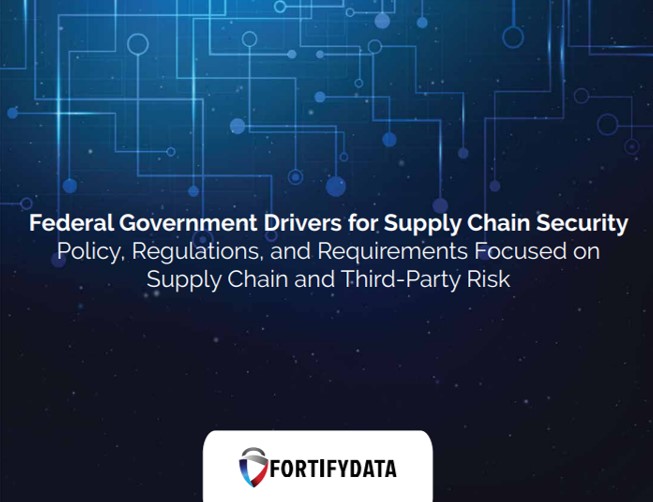- Platform
Platforms
- Solutions
- Industries
Industries
- Why FortifyData
Why FortifyData
"This is an excellent starting point for any organization that wants to get serious about their cyber risk management. The system has the capability to grow as you become more sophisticated in your use"
IT Director
Services Industry - Company
Company
- Partners
Partners
- Resources
Resources

Federal Government Drivers for Supply Chain Security
Policy, Regulations, and Requirements Focused on Supply Chain and Third-Party Risk
WHITEPAPER
> Understand the different regulations with third-party specific control requirements
> Discover how to approach third-party cyber risk management to meet Federal requirements
> Learn how to implement automation to rapidly deliver value in your TPCRM program
A growing body of evidence suggests that adversaries are increasingly targeting the supply chain as a means to compromise government networks and infrastructure.
To address these mounting challenges, the U.S. government has implemented a range of policies and regulations designed to help minimize third-party attack vectors. These measures aim to ensure that government agencies and their vendors adhere to robust cybersecurity standards and best practices.
This whitepaper looks at Regulations, and the underlying frameworks with security controls that provide guidelines for risk assessments, security control reviews and continuous diagnostics and mitigation related to third parties.
Fill out the form below to access the whitepaper.
